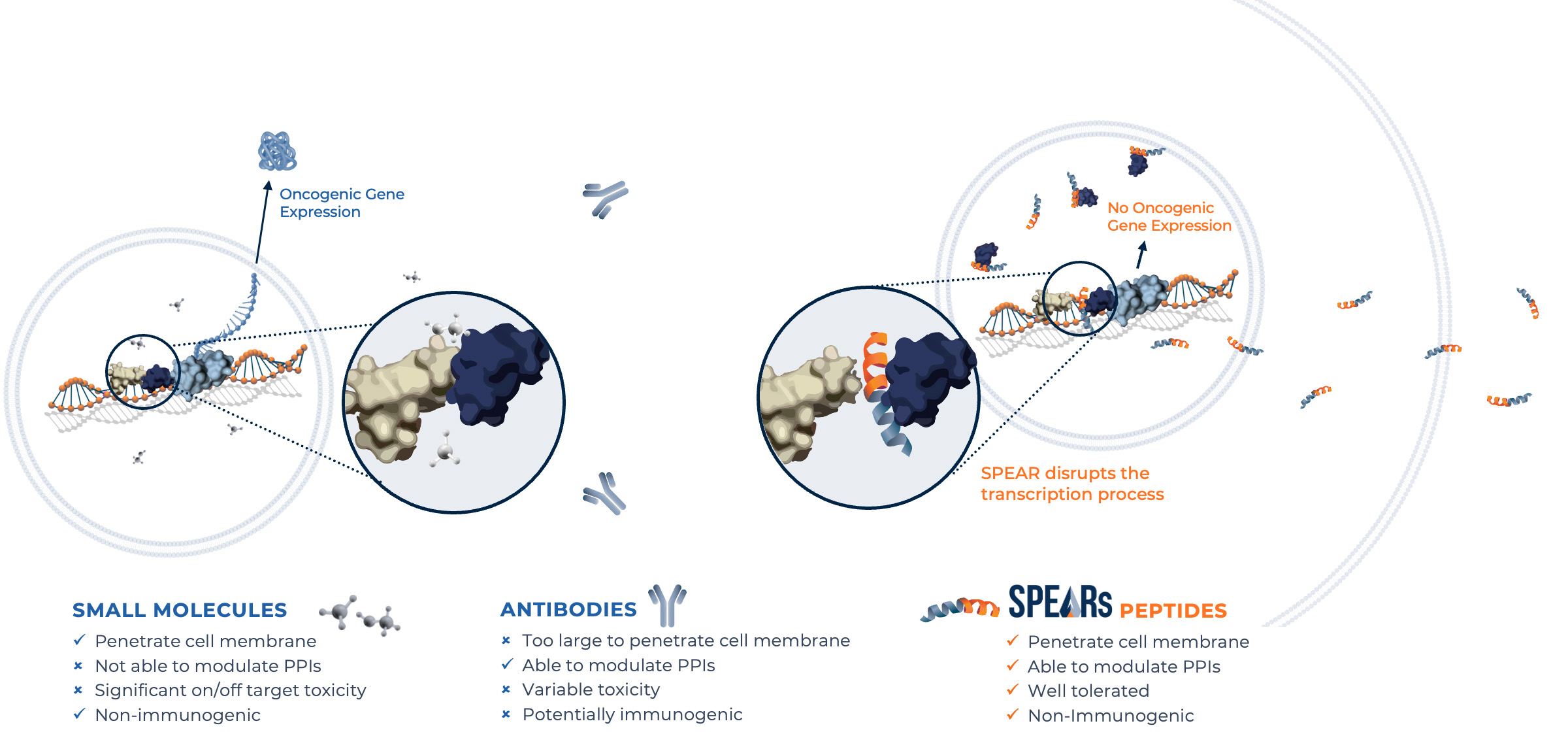We discover and develop  ™ that act at the level of transcriptional regulation of oncogenic and immune-modulatory proteins
™ that act at the level of transcriptional regulation of oncogenic and immune-modulatory proteins
Transcription factors are proteins that have many roles in the human body. When dysregulated, however, transcription factors play a major role in oncogenesis and immune response by binding DNA at specific sequences to activate or inhibit gene expression. It is currently estimated that transcription factors represent approximately 20% of oncogenes 1,2. Despite being considered “undruggable,” a better understanding of transcription factor regulation along with advances in therapeutic modalities have changed this hypothesis and opened new possibilities to utilize transcription factors as cancer drug targets.
Turning an industry challenge into a vast opportunity
Inhibition of oncogenic transcriptional activity by disrupting essential protein-protein interactions (PPIs) represents a powerful approach to treating cancer. However, the nature of these PPIs, along with their location inside of the cell or nucleus, provides significant hurdles for traditional therapeutic modalities and has been a long-standing industry challenge.
The key lies in disruption of Protein-Protein Interactions. However, traditional modalities – small molecules and antibodies – lack the properties required to effectively target PPIs. We believe that a tailored approach is required to make the promise of drugging transcription factors a reality.
We created ![]() ™ to address this challenge.
™ to address this challenge.

Intelligently-Designed Therapies to Fight Cancer
at BioAce Health, we are pioneering a new class of molecule called SPEARs™ (Stabilized Peptides Engineered Against Regulation). We believe SPEARs hold the potential to combine the best properties of small molecules and antibodies in disrupting PPIs – allowing us to address cancer at the source of disease.
View SPEARs™A Robust Discovery Engine
We discover SPEARs through our Peptide Antagonist Discovery System (PADS™) platform, which is built on our team’s years of experience in peptide chemistry and molecular and cancer biology.
View PADS™Footnotes: 1 Molecules 2018, 23, 1479; doi:10.3390/molecules23061479; 2 Cancers 2020, 12, 2296; doi:10.3390/cancers12082296
